During the afternoon of 21st August 1942 the crew of this aircraft were undertaking a night navigation training flight with No.19 Operational Training Unit when the aircraft flew into the top of Ben Macdui in the Cairngorm mountains. The crew were flying a triangular route from Kinloss to Doune to Banchory and back to Kinloss when the crash occurred on the leg between Doune and Banchory. Sadly all on board were killed in the crash which had occurred on the second highest mountain in Great Britain and what was at the time the highest aircraft crash site in the country. Even though this accident occurred in the Summer months the weather in Cairngorms can be very different to that what would be expected of Summer in other areas of the country and it is likely that the aircraft crashed while flying in very poor visibility. The remains of the aircraft was not found for three days and it would be a further two days until the bodies of the crew were recovered and taken to Kinloss. A memorial plaque was placed at the crash site in 1947 though the memorial was later rebuilt and replaced it is now marked on the modern O.S. map for the area.
Anson DJ106 was delivered to 19 O.T.U. as new on 10th March 1942. It was destroyed following the crash on Ben Macdui on 21st August 1942 with Cat.E/FA damage being the damage assessment. It was struck off charge on 31st August 1942.
(Trainee?) Pilot – Sgt John Llewelyn RAFVR (1381320), aged 24, of Carmarthen. Buried Garnant (Old Bethel) Chapelyard, Carmarthenshire.
(Instructor) Observer - F/Sgt Geoffrey Fillingham RAFVR (938234), aged 22, of Hessle, Yorkshire. Buried Kinloss Abbey Burial Ground, Moray.
Trainee Navigator – P/O William Gilmour RCAF (J/10886), aged 26, of Powell River, British Columbia, Canada. Buried Kinloss Abbey Burial Ground, Moray.
(Instructor) Wireless Operator / Air Gunner – Sgt Kenneth Edmondson Carruthers RAFVR (954000), aged 20, of Windermere, Westmorland. Buried Windermere Cemetery, Westmorland (now Cumbria).
Trainee Wireless Operator / Air Gunner – Sgt John Beaton Robertson RAFVR (1023142), aged 29, of Huntly, Aberdeenshire. Buried Kinloss Abbey Burial Ground, Moray.
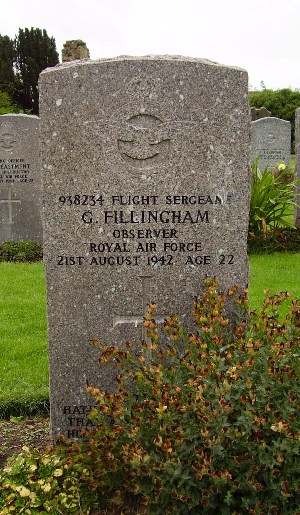
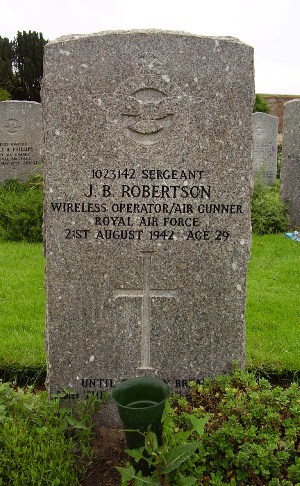
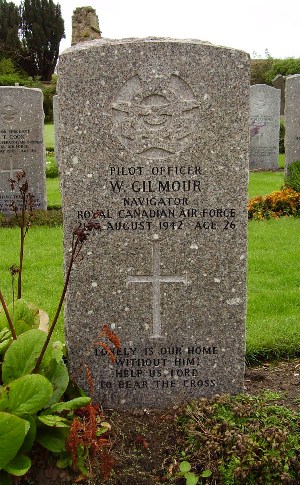
Graves of three of the five crew killed in this accident. William Gilmour was married on 6th April 1942 just before he was posted overseas.
I thank Sgt Llewelyn's nephew Geraint Llewelyn for contacting me in August 2012, he kindly added details about a number of the aircrew involved in this incident. John Llewelyn had undertaken basic training in Dallas, USA and had flown a tour with 88 Squadron before being posted to 19 OTU on 7th July 1942.
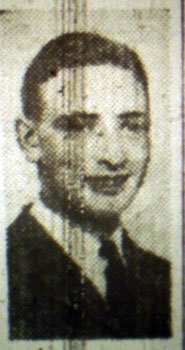

Kenneth Carruthers and his grave in Windermere Cemetery. He attended Windermere Grammar School prior to enlisting into the RAFVR at the age of eighteen. In his obituary in the Westmoreland Gazette it refers to him as having taken part in bombing raids over Germany, further research lists him having flown a tour with 102 Squadron and by the time he was flying at Kinloss he was in the role of instructor.
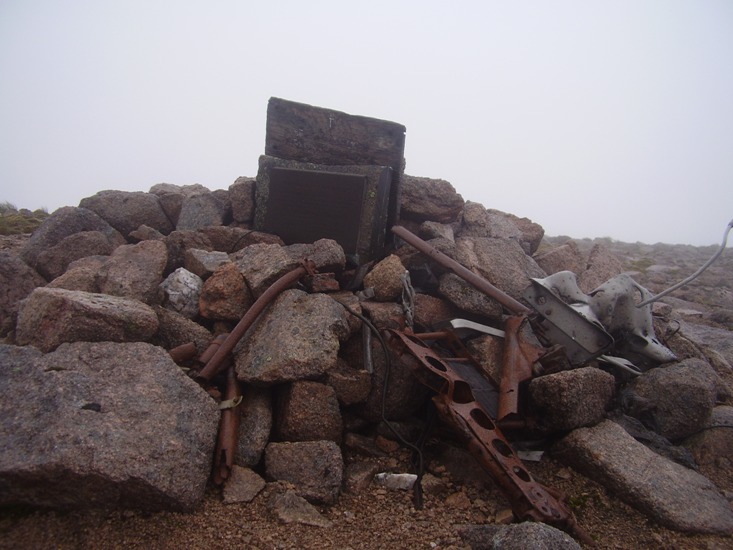
I visited the crash site in appalling weather conditions in August 2011 and only spent the briefest of time at the site but the photographs shown on this webpage do not show the scale of the bad weather. Because of the weather I only took a handful of photographs on the oldest of the cameras I use and did not descend down to the other engine and further parts in the Allt a'Choire Mhòir stream.
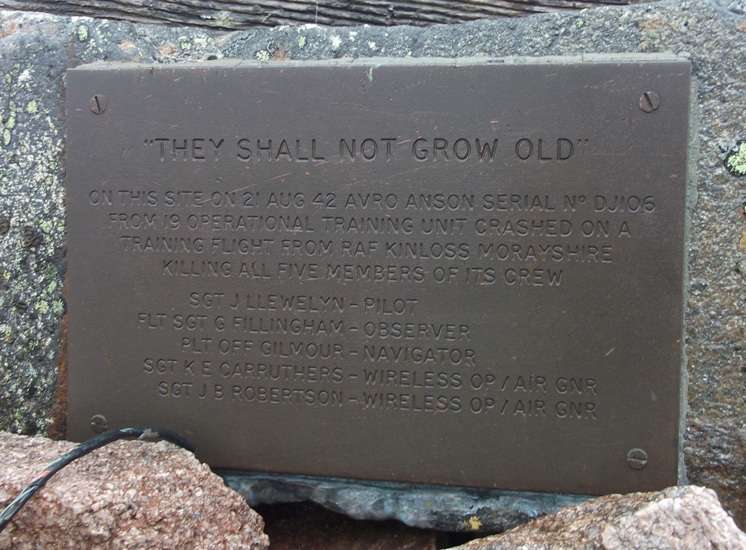
The memorial plaque at the crash site.
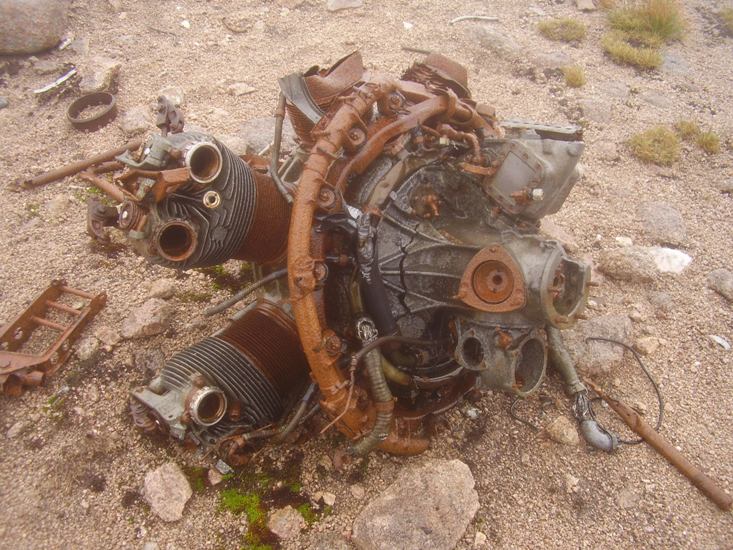
One of the Anson's engines and other parts of the aircraft nearby. This area must be the area where the aircraft has crashed as it contains many tiny fragments which generally only appear close to points of impact.
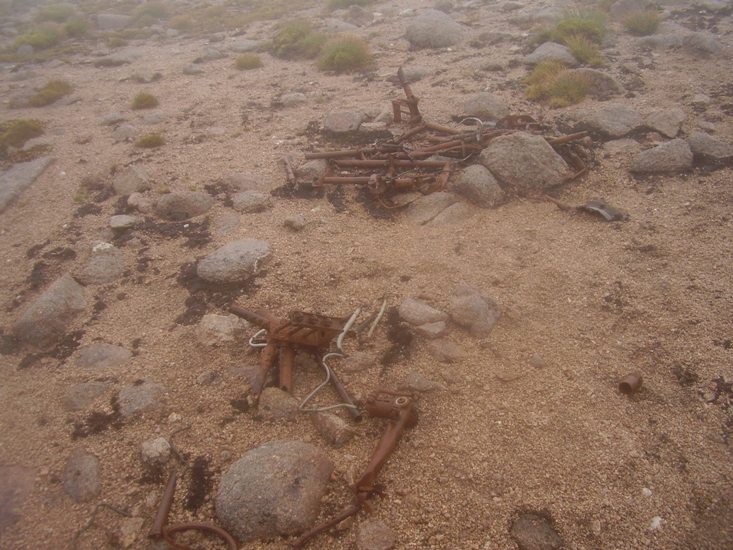
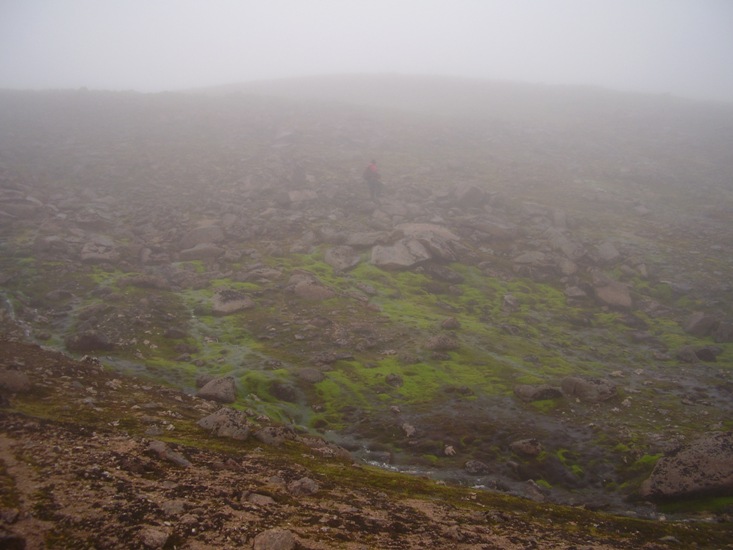
Two USAF F15 jets crashed a few hundred metres from this Anson in 2001. The Anson crashed on the western side of the summit of Ben Macdui, one of the F15's clipped a ridge on the eastern side of the summit, hit the other F15 and both crashed nearby but far enough over the top on the east side for both F15 and Anson sites to be separate. Walking websites refer to small bits of metal of what is believed to be aircraft wreckage in the area of where one of the F15's was found on the north-eastern side of the summit and in an area where snow rarely fully melts (in the area partly shown in the photograph above). To get out of the high wind and driving rain Will Lund and myself went down into this area and found some of these pieces referred to and many of these pieces seem too old to be F15-related. The yellow paint on two of the parts looks to be the same shade as was used in the paint on WW2 training aircraft and probably the colour of the Anson so I would link them as coming from Anson DJ106 though cannot fully explain the distance they seem to have travelled. At least one of the other small parts found is made of a different metal (probably titanium) and is probably a piece of an F15. Sadly the older parts did not contain part numbers which would have made the identification easier. Rumours of an unidentified "Spitfire" crash on Ben Macdui exist though if true then a death must have occurred and been registered, to date none has been found so these rumours are probably only that.
In 2001 the F15's crashed into deep snow and the resulting clear-up was very thorough, virtually all the wreckage was taken off the mountain and tonnes of snow were removed from the site as it contained aviation fuel. There appears to be very little trace of these modern aircraft crashing ten years later in 2011 and little damage was done to the mountain's ecology such was the efforts of all involved at the time. Only a few fragments are said to remain at either site and these were probably hidden behind rocks when the sites were cleared and were missed at the time.
As previously stated, the area where these secondary "Anson" finds were found has been used in snow training for many years because of the snow conditions. It still remains a favourite area for the practice building of snow holes. In this area as well as the aircraft bits I also found a military spoon dated 1952, lots of small peices of wood and long pieces of steel. The spoon possibly relates to the snow holes but the wood and steel could be left behind from snow training activities or from a method of containing the contaminanted snow in 2001 after the F15 crashes. How the older aircraft parts ended up here is speculation but they could have been wind blown or more likely dropped there by curious walkers, or by those involved in the snow training perhaps using odd bits for digging out the snow. I would welcome any information on what else has occured here or any other suggestions for why these items are in this location.

This photograph shows aeroplane wreckage which appears to be much older than the F15's and is probably from the Anson.
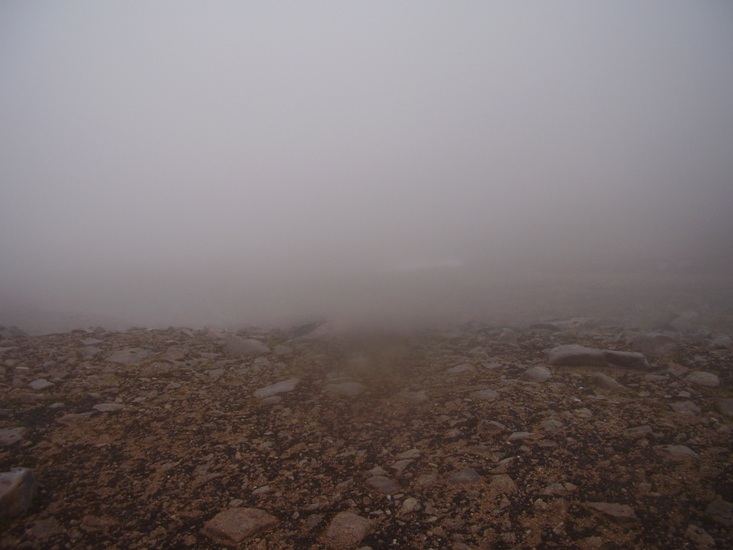
A final, but poor photograph looking at the area where these secondary finds were located.